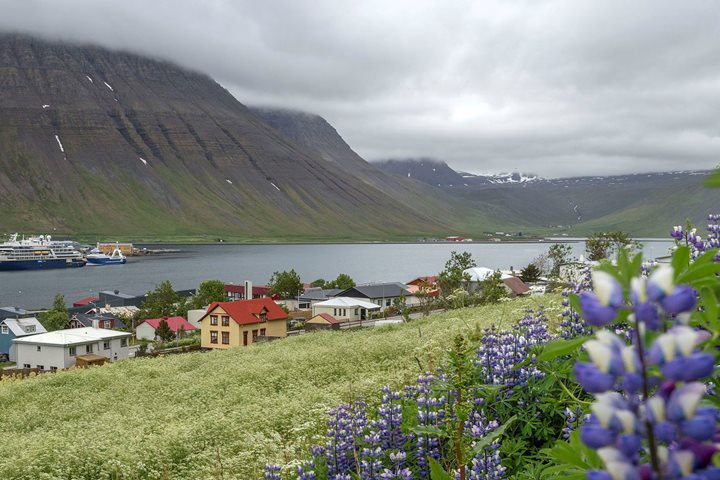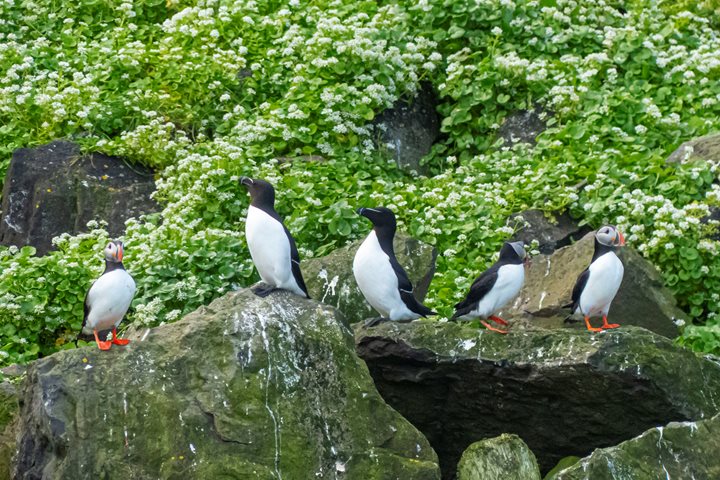Surrounded by majestic mountains, tall glaciers, and magnificent nature we found ourselves in Trinity Harbour for our first landing of the voyage. Trinity Harbour is an old English whaling station from the 1600’s. Basking in the Svalbard sunshine and enjoying the tranquility of Magdalenefjord, it was hard to imagine what must have been rather more destitute scenes when Trinity Harbour was still a working whaling station all those hundreds of years ago.
Today our walk along the beach was our chance to step back into history as we strolled past the four remaining blubber ovens as well as the largest burial site on Svalbard, which contains 130 graves from the whaling era. Thankfully today it is the beauty of Magdalenefjord that brings people here and the whaling site is simply a chance to appreciate the history that once defined this remarkable fjord.
Magdalenefjord and Trinity Harbour are not only astonishing in terms of the landscape and the history, but also for the nature. Not far from Trinity Harbour we found the wrinkled brown and pink hides of two dozen walruses lazing on the shoreline. Immediately distinguishable by their long white tusks, grizzly whiskers, and rotund blubbery bodies this herd of walrus seemed entirely unperturbed by our appearance. Indeed about six of them even came over to the Zodiacs to check us out!
This morning was perhaps one of the best starts to a Svalbard expedition anyone could hope for.
And we were only half way through the day! Cruising out of the fjord and further towards the northwest of Svalbard we found ourselves at Bjornbreen—a huge glacier face stretching for many kilometres in front of our eyes. The scale was so vast it was hard to perceive, but as soon as our black Zodiacs were in the water the contrast between the huge white glacier face and the minute black Zodiacs was quite remarkable. This glacier face really was enormous and during our cruise chunks of ice were constantly calving from the glacier face . Remaining a safe distance from the calving face we watched in awe. Being out there in the Zodaics afforded us a totally different perspective of the ice world.
The varying colours of blue, the air bubbles releasing from the icebergs and crackling as they did so, the frenzy of kittiwakes, terns, gulls, and guillemots feeding along the ice edge as they flew around looking for food—there was no shortage of sights and sounds to behold at Bjornbreen. And the most memorable sound of them all? The thunderous echoes as the ice broke away from the glacier face and crashed into the sea below.







